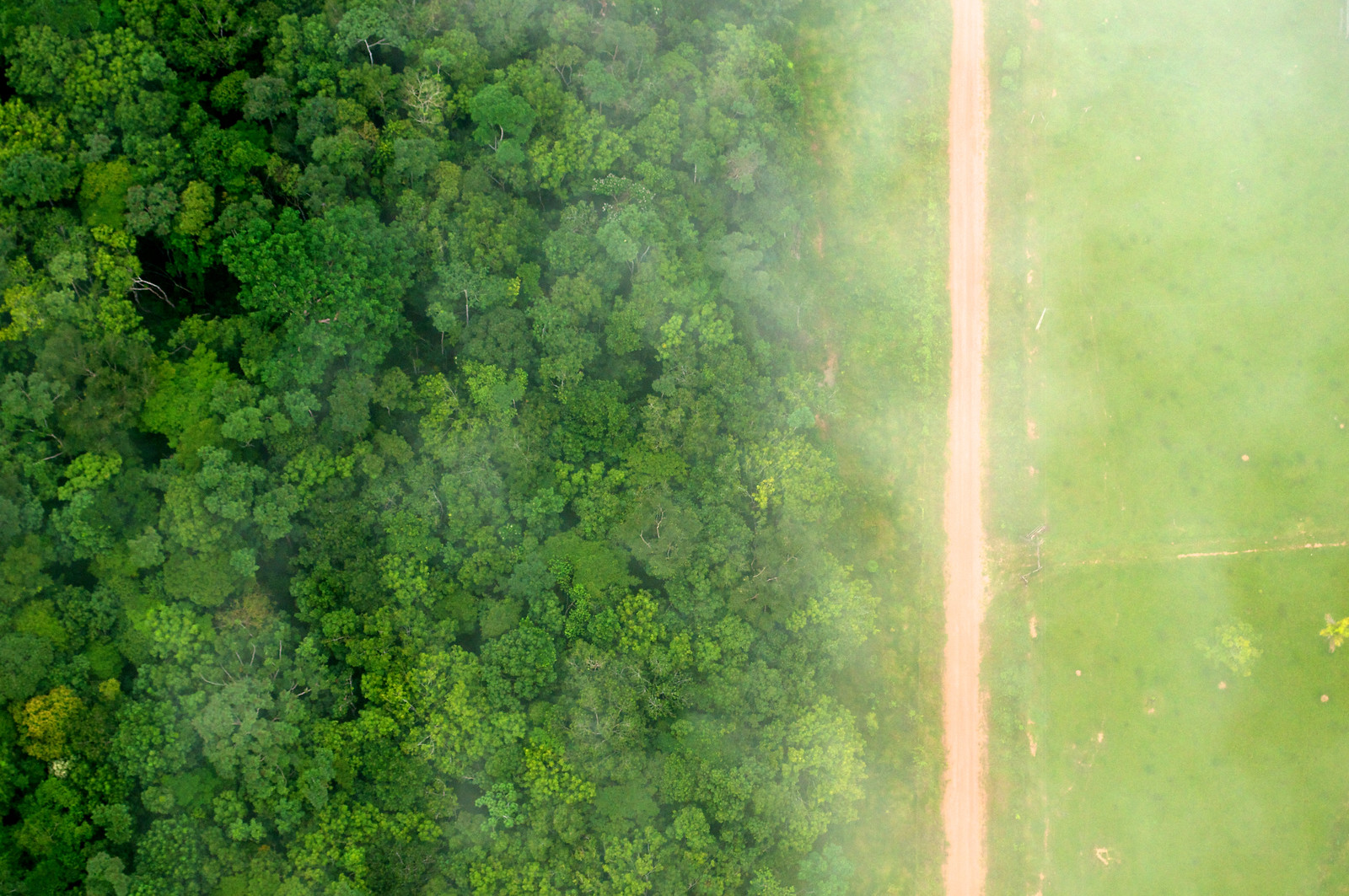The devastating fires that ravaged the Amazon last year were met with international public outrage and the age-old issue of how best to go about “saving the rainforest” gained urgency like never before. July 2019 set a new record for the most deforestation ever in the Amazon in a single month. And while forest fires do happen naturally in the Amazon during the dry season, the most recent fires are thought to have been started by farmers and loggers using illegal slash-and-burn techniques to clear land growing crops and holding livestock.
Slash-and-burn techniques used to clear huge swathes of rainforest result in serious, long-term damage. Not only do the fires release carbon dioxide, thus contributing to the greenhouse effect, but they also cause rainforest soils (already low in nutrients) to lose even more nutrients and biomass. This kind of clearing also makes soil more vulnerable to solar radiation, which speeds up mineralization and releases further nutrients and CO2. This reduction in carbon stocks ultimately leads to the remaining nutrients rapidly leaching out. After only a few years, yields decline and the slash-and-burn land can no longer be used for agriculture, meaning farmers have to create new land for crops and grazing with even more slash-and-burn clearing, which then also leaches out shortly afterwards and can no longer be used for agriculture… it’s a vicious circle.
Komorebi: using satellites and machine learning to track disappearing forests
According to the World Resources Institute, rainforests, by storing carbon, can provide 23 percent of the climate mitigation that the planet needs by 2030. At the same time, according to the IPCC report, deforestation and forest degradation are responsible for about 13 percent of global CO2 emissions – more than the entire global transportation sector and second only to the energy sector. Deforestation therefore not only contributes significantly to current greenhouse gas emissions, but the protection and rehabilitation of forests also plays a key role in fighting climate change.
At the ETH Zurich, PhD student David Dao and his team are working on a research project that harnesses the power of artificial intelligence and drones to counter unsustainable land use. Calling their project “Komorebi” the researchers are using machine learning to independently evaluate satellite and drone images, comparing sequences of successive aerial photographs in order to identify where and how much forest areas change or disappear over time. With the help of adaptive algorithms, it should even be possible for them to predict which areas will be most severely affected by deforestation in the future.
The project, which is funded by IDBLabs and EIT Climate-KIC, started its pilot phase in January in the Valvidian rainforest, which runs from the west coast of southern Chile into Argentina. There they are testing how the accuracy of the predictions can be improved by the algorithms, using not only satellite images but also images from drones. The use of drones, which can take pictures at a greater distance, should make it possible not only to detect changes in the tree population, but also to identify the tree species affected by changes in forestation levels – important information because different tree species store different amounts of CO2.
GainForest: putting ‘forest caretakers’ on the blockchain
But besides recognising the threat of deforestation in the Amazon and tracking its impact, how can tech actually be used to effectively protect the rainforest and prevent even more of it from being destroyed? Right now, about 80 percent of deforestation in the Amazon is caused by local smallholder farmers who deliberately start blazes in an effort to clear land for the crops or livestock that they need to earn money and feed their families. However, stopping them from doing this would mean depriving many people of their incomes and their livelihoods.
One solution that could work in this context is the REDD+ programme, first negotiated under the United Nations Framework Convention on Climate Change (UNFCCC) in 2005, which aims to reduce emissions from deforestation and forest degradation and to promote sustainable forest management and the expansion of forest carbon stocks, especially in countries of the Global South. The REDD+ programme aims to mitigate climate change by incentivising countries in the Global South to keep their forests intact by offering them results-based payments for forest conservation efforts: actions to reduce or remove forest carbon emissions and investments in low-carbon paths to sustainable development. The carbon stored in the forests is thus assigned a monetary value, and the act of conserving forests receives greater financial weight in economic decision-making processes.
In 2017, David Dao and his international, interdisciplinary team came up with an idea for how to accelerate the REDD+ project and incentivise this kind of climate-friendly ‘forest caretaking’ with the innovative use of tech: the result was GainForest, a transparent platform that allows anyone to become a stakeholder in rainforest areas with the help of blockchain-powered smart contracts.
 © Gainforest Gainforest lets you invest in the well-being of an area of forest, supporting local land owners and forest conservation efforts.
© Gainforest Gainforest lets you invest in the well-being of an area of forest, supporting local land owners and forest conservation efforts.The idea is fairly simple: People from local communities, for example farmers, stakeholders and/or investors take on the responsibility of protecting areas of land in the Amazon threatened by deforestation. They select an area and an amount of money that they wish to invest. After a set time (a few months or years) the area is reviewed automatically using machine learning and satellite imagery. If the area of forest is still in good condition, the stakeholder receives his original investment and a reward on it – with higher risks rewarded with higher returns.
In this system, people with financial stakes in the areas are incentivised to take care of their own patch of forest — either locally or globally. Local farmers can invest in their own regions and take care of local land, while global entrepreneurs and communities can make investments, thereby paying local caretakers to fight local deforestation. All of this is made possible by the use of blockchain-based smart contracts, which track the investors and their land and guarantee that payments are made as soon as the conditions are met. All investments and transactions are recorded and stored transparently within the blockchain.
The longer an area is then protected from deforestation, the greater its value – and with it the financial value for the stakeholder – meaning that the platform also makes it clearly in the interest of the local farmers or investors not to clear the forest, but to look after and preserve the area that’s been entrusted to their care. A first blockchain pilot was tested in Brazil in mid-2019 and a public beta is to be released early this year.
This is a translation of an original article that first appeared on RESET’s German-language site.

This article is part of the RESET Special Feature “Artificial Intelligence – Can Computing Power Save Our Planet?”
The RESET Special Feature on AI is part of a project funded by the Deutschen Bundesstiftung Umwelt (German Federal Environmental Foundation DBU). As part of this project, over a period of two years we will be developing four RESET Special Features on the topic of “Opportunities and Potentials of Digitalisation for Sustainable Development”.
You can find more information here.






